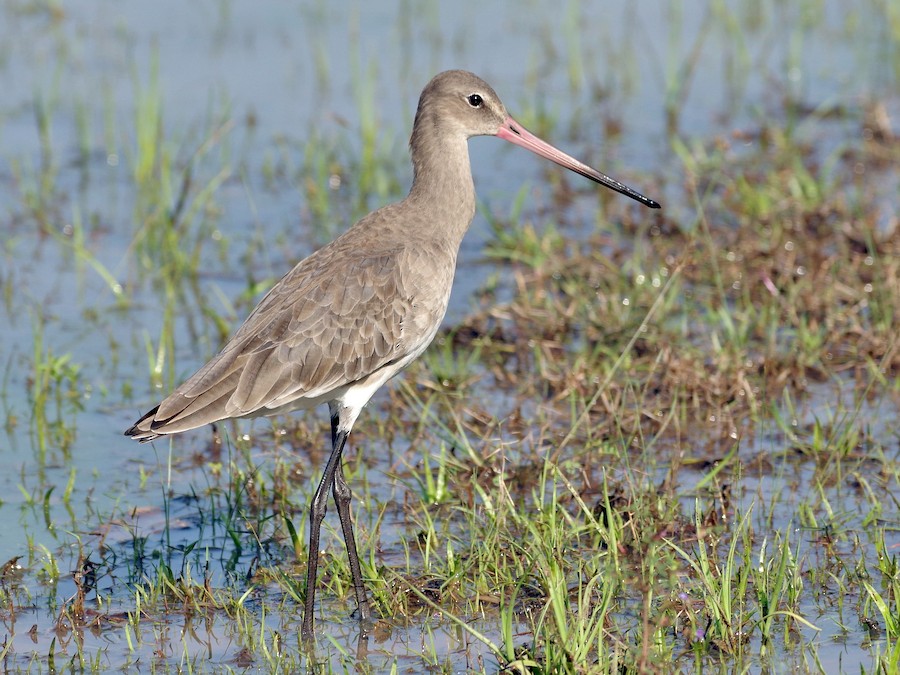Family: Scolopacidae
Genus: Limosa
A sociable medium-sized wader distinguished by its long, slightly upturned bill, particularly notable for its very long pink-based structure. During the breeding season, it displays a vivid rusty head and breast, with dark barring on the belly. In contrast, its nonbreeding plumage features a rather plain grayish head, breast, and upperparts, lacking the streaked appearance found in the Bar-tailed Godwit. In flight, it reveals a striking white wing stripe, a white rump, and a black tail. Although fairly common, it tends to be localized in distribution. It breeds in grassy wetlands and can be found year-round in both fresh and brackish marshes, as well as on adjacent tidal flats. Its primary feeding method involves wading in deep water, where it uses its long bill to probe for prey.
Photo: Look how gorgeous [myshortcode]
Description [myshortcode]

Breeding Locations:
The Black-tailed godwit has a diverse breeding range encompassing various countries in Europe and Asia. In Europe, it breeds in countries such as Iceland, the United Kingdom, the Netherlands, and other parts of northern and eastern Europe. In Asia, its breeding range extends to areas in Russia, Kazakhstan, and other neighboring countries. The godwit typically favors breeding in wetland habitats such as marshes, wet meadows, and coastal areas.
Migration Routes:
During the non-breeding season, the Black-tailed godwit embarks on extensive migrations, traveling to different parts of Africa, including countries such as Senegal, Mauritania, Guinea-Bissau, and other coastal and inland wetland areas. The godwit’s migration routes cover considerable distances and often involve stopover sites where the birds rest and refuel before continuing their journey.
Wintering Grounds:
The godwit’s wintering range extends to various countries in sub-Saharan Africa, particularly in the wetland areas and mudflats that provide suitable feeding grounds. These wintering grounds are vital for the godwit’s survival during the non-breeding season, as they offer abundant food resources such as invertebrates and aquatic organisms.
Habitat Preferences:
The Black-tailed godwit displays a preference for a range of wetland habitats throughout its distribution. Whether during breeding, migration, or wintering, the godwit relies on wetlands such as estuaries, coastal lagoons, rivers, and inland marshes for foraging, roosting, and nesting. Healthy wetland ecosystems are crucial for sustaining godwit populations, highlighting the significance of conserving these habitats across the bird’s distribution range.
Conservation Status:
Due to various environmental challenges, including habitat loss, land-use changes, and climate change, the conservation status of the Black-tailed godwit is a concern. Conservation efforts, including designation of protected areas, habitat restoration, and international collaboration, are essential for safeguarding the species and its diverse range of wetland habitats.
In conclusion, the Black-tailed godwit’s distribution spans a wide range of breeding, migration, and wintering areas across Eurasia and Africa, emphasizing the bird’s dependence on diverse wetland habitats throughout its annual cycle. Understanding and conserving the godwit’s distribution is critical for ensuring the long-term survival of this iconic wader species.




